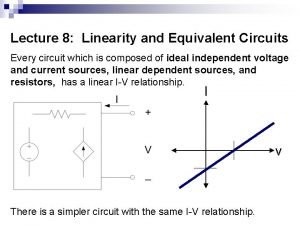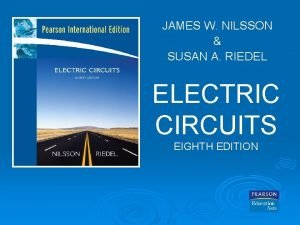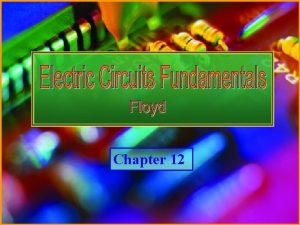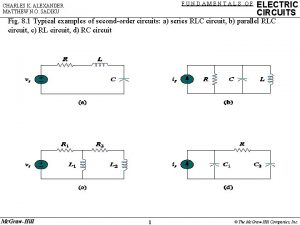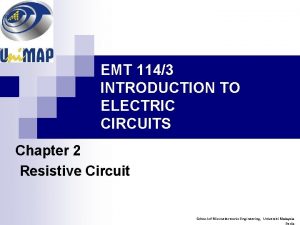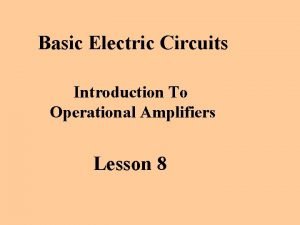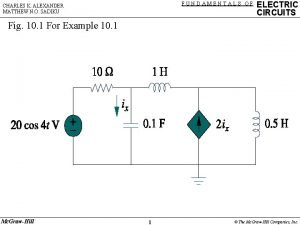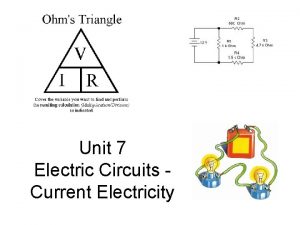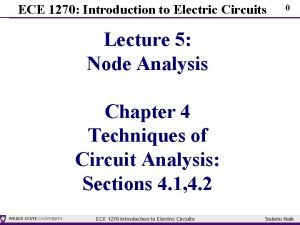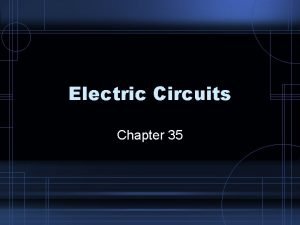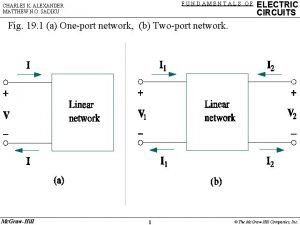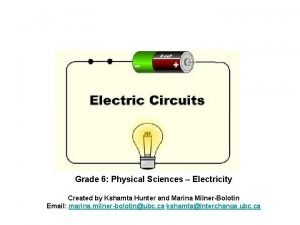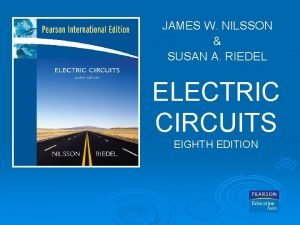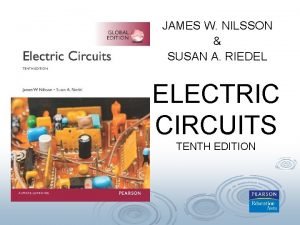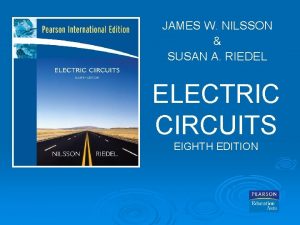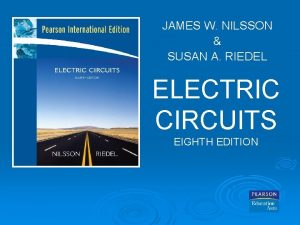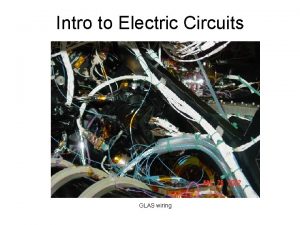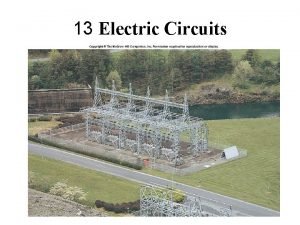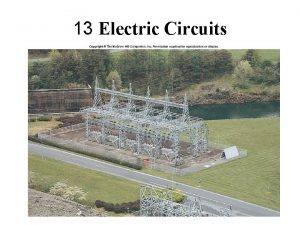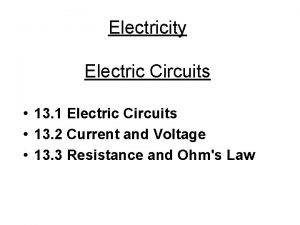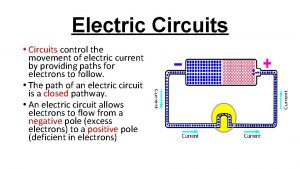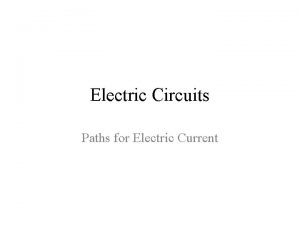JAMES W NILSSON SUSAN A RIEDEL ELECTRIC CIRCUITS

























- Slides: 25

JAMES W. NILSSON & SUSAN A. RIEDEL ELECTRIC CIRCUITS EIGHTH EDITION

CHAPTER 10 SINUSOIDAL STEADY – STATE POWER CALCULATIONS © 2008 Pearson Education

CONTENTS 10. 1 Instantaneous Power 10. 2 Average and Reactive Power 10. 3 The rms Value and Power Calculations 10. 4 Complex Power 10. 5 Power Calculations 10. 6 Maximum Power Transfer © 2008 Pearson Education

10. 1 Instantaneous Power Ø Instantaneous power is the product of the instantaneous terminal voltage and current, or The black box representation of a circuit used for calculating power © 2008 Pearson Education

10. 1 Instantaneous Power Ø The positive sign is used when the reference direction for the current is from the positive to the negative reference polarity of the voltage. Ø The frequency of the instantaneous power is twice the frequency of the voltage (or current). © 2008 Pearson Education

10. 1 Instantaneous Power Instantaneous power, voltage, and current versus ωt for steady-state sinusoidal operation © 2008 Pearson Education

10. 2 Average and Reactive Power Average Power Ø Average power is the average value of the instantaneous power over one period. Ø It is the power converted from electric to non-electric form and vice versa. © 2008 Pearson Education

10. 2 Average and Reactive Power Ø This conversion is the reason that average power is also referred to as real power. Ø Average power, with the passive sign convention, is expressed as © 2008 Pearson Education

10. 2 Average and Reactive Power Ø Reactive power is the electric power exchanged between the magnetic field of an inductor and the source that drives it or between the electric field of a capacitor and the source that drives it. © 2008 Pearson Education

10. 2 Average and Reactive Power Ø Reactive power is never converted to nonelectric power. Reactive power, with the passive sign convention, is expressed as © 2008 Pearson Education

10. 2 Average and Reactive Power Instantaneous real power and average power for a purely resistive circuit © 2008 Pearson Education

10. 2 Average and Reactive Power Instantaneous real power, average power, and reactive power for a purely inductive circuit © 2008 Pearson Education

10. 2 Average and Reactive Power Instantaneous real power and average power for a purely capacitive circuit © 2008 Pearson Education

10. 2 Average and Reactive Power Factor Power factor is the cosine of the phase angle between the voltage and the current: © 2008 Pearson Education

10. 2 Average and Reactive Power The reactive factor is the sine of the phase angle between the voltage and the current: © 2008 Pearson Education

10. 3 The rms Value and Power Calculations A sinusoidal voltage applied to the terminals of a resistor Average power delivered to the resistor © 2008 Pearson Education

10. 3 The rms Value and Power Calculations The average power delivered to R is simply the rms value of the voltage squared divided by R. If the resistor is carrying a sinusoidal current, the average power delivered to the resistor is: © 2008 Pearson Education

10. 4 Complex Power Ø Complex power is the complex sum of real power and reactive power. | S | = apparent power Q = reactive power θ P = average power A power triangle © 2008 Pearson Education

10. 4 Complex Power Quantity Units Complex power volt-amps Average power watts Reactive power var Three power quantities and their units © 2008 Pearson Education

10. 4 Complex Power ØApparent Power is the magnitude of complex power. © 2008 Pearson Education

10. 5 Power Calculations The phasor voltage and current associated with a pair of terminals © 2008 Pearson Education

10. 6 Maximum Power Transfer A circuit describing maximum power transfer © 2008 Pearson Education

10. 6 Maximum Power Transfer Condition for maximum average power transfer The circuit with the network replaced by its Thévenin equivalent © 2008 Pearson Education

10. 6 Maximum Power Transfer Example: Determining Maximum Power Transfer without Load Restrictions. a) For the circuit shown below, determine the impedance ZL that results in maximum average power transferred to ZL. b) What is the maximum average power transferred to the load impedance determined in (a)? © 2008 Pearson Education

THE END © 2008 Pearson Education
 Electric circuits by james nilsson and susan riedel
Electric circuits by james nilsson and susan riedel Nilsson
Nilsson James w nilsson
James w nilsson Advantages of parallel circuits over series circuits
Advantages of parallel circuits over series circuits Chapter 35 electric circuits answers
Chapter 35 electric circuits answers Electric circuits fundamentals floyd
Electric circuits fundamentals floyd Fundamentals of electric circuits chapter 4 solutions
Fundamentals of electric circuits chapter 4 solutions Fundamentals of electric circuits
Fundamentals of electric circuits Ise fundamentals of electric circuits
Ise fundamentals of electric circuits Introduction to electric circuits
Introduction to electric circuits Electric circuits equations
Electric circuits equations Sadiku
Sadiku Ohm's law worksheet doc
Ohm's law worksheet doc Physics reference table
Physics reference table Electric current
Electric current Superposition electric circuits
Superposition electric circuits 9
9 Basic electrical engineering kulshreshtha
Basic electrical engineering kulshreshtha Introduction to electric circuits
Introduction to electric circuits Chapter 35 electric circuits
Chapter 35 electric circuits Three elements of electricity
Three elements of electricity Principles of electric circuits
Principles of electric circuits Fundamentals of electric
Fundamentals of electric Chapter 35 electric circuits
Chapter 35 electric circuits Kshamta hunter
Kshamta hunter Fundamentals of electric circuits chapter 7 solutions
Fundamentals of electric circuits chapter 7 solutions

